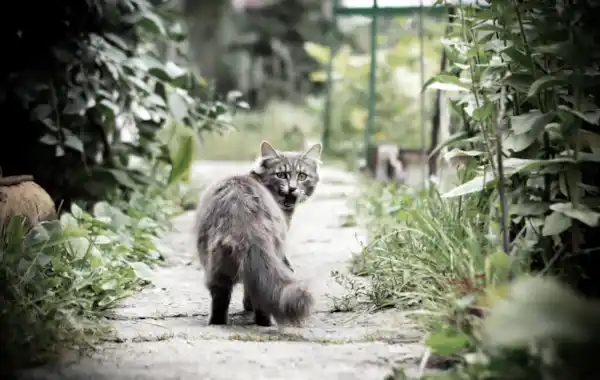When it comes to allowing our precious cat companions out into the big wide world for the first time it's only natural for us to feel nervous.
 But by following the guide below, hopefully you will feel comfortable enough to happily wave goodbye to his furry behind as he wanders off on each new outdoor adventure.
But by following the guide below, hopefully you will feel comfortable enough to happily wave goodbye to his furry behind as he wanders off on each new outdoor adventure.
Whilst some sources recommend keeping your cat indoors for the first four to six weeks, I don’t believe there is one rule that applies to all cats. It’s important that you give your cat time to become familiar with all aspects of his indoor environment first, and for some cats this will take longer than for others. As a general rule of thumb, I would allow at least two weeks. Thereafter be guided by your cat’s behaviour. Is he confident and showing signs that he wants to be ‘released’? If so, it’s fine to allow him out when he starts asking and should prevent any problem behaviours associated with frustration. If your cat is more cautious, take things at his pace, and if this means repeatedly standing with him in a semi-open doorway, allowing him to sniff the air before beating a hasty retreat back inside, then so be it.
If you have a kitten, it’s important that he has had all his vaccinations and has been neutered before allowing him out, this is usually from four months onwards. Likewise, ensure your adult cat is neutered and microchipped before stepping paw outside.
Make your home a cat home
You can use the time when your cat is exploring your home to optimise his indoor and outdoor environments. Here are some things to consider:
- Train your cat to respond to the sound of a treat box or packet being shaken whilst simultaneously calling his name. When he approaches, he can be rewarded with a treat. This will be your most valuable tool when trying to encourage your cat back home. If your cat is more motivated by toys or physical contact the treats can be substituted for these in your training sessions.
- Provide lots of enrichment within his indoor environment such as high places, hiding places, warm areas for resting, scratching posts and toys for interactive and solo play. This will allow him to form positive associations with his home and give him the motivation to return.
- Likewise, creating opportunities for your cat to feel safe and stimulated in the garden might provide him with a reason to stay in it for longer and come back to it. A cat friendly garden is one that includes: Camouflage, high perches, places to scratch, shelter and shade, and not forgetting an outdoor water bowl.
If you’d prefer your cat not to roam beyond the borders of your garden, you might want to consider a cat fencing system.
Letting cat outdoors for first time
It’s a good idea to schedule your cat’s first outing when you have plenty of time, be this at a weekend or on a day off. This way you can spend time in the garden quietly observing him from a distance whilst he explores. Initially keep the door open to enable him to run in if he feels anxious or has had enough. You might also like to use these first few outings to continue the training sessions you started indoors.
- Avoid carrying your cat outside or using a harness. Anything that removes his control from the situation is likely to provide a negative association with going or being outside.
- Gradually build up the length of time your cat spends outside until he appears relaxed in his outdoor environment. At this point he can go on his garden excursions on his own.
A word of caution. It’s possible that your garden has already been claimed by a neighbouring cat. This means your cat, if so inclined, will have to stage a takeover and work hard to maintain it as his territory. So don’t be surprised if, during this time your cat spends more time outside or you hear the odd cat shriek.







